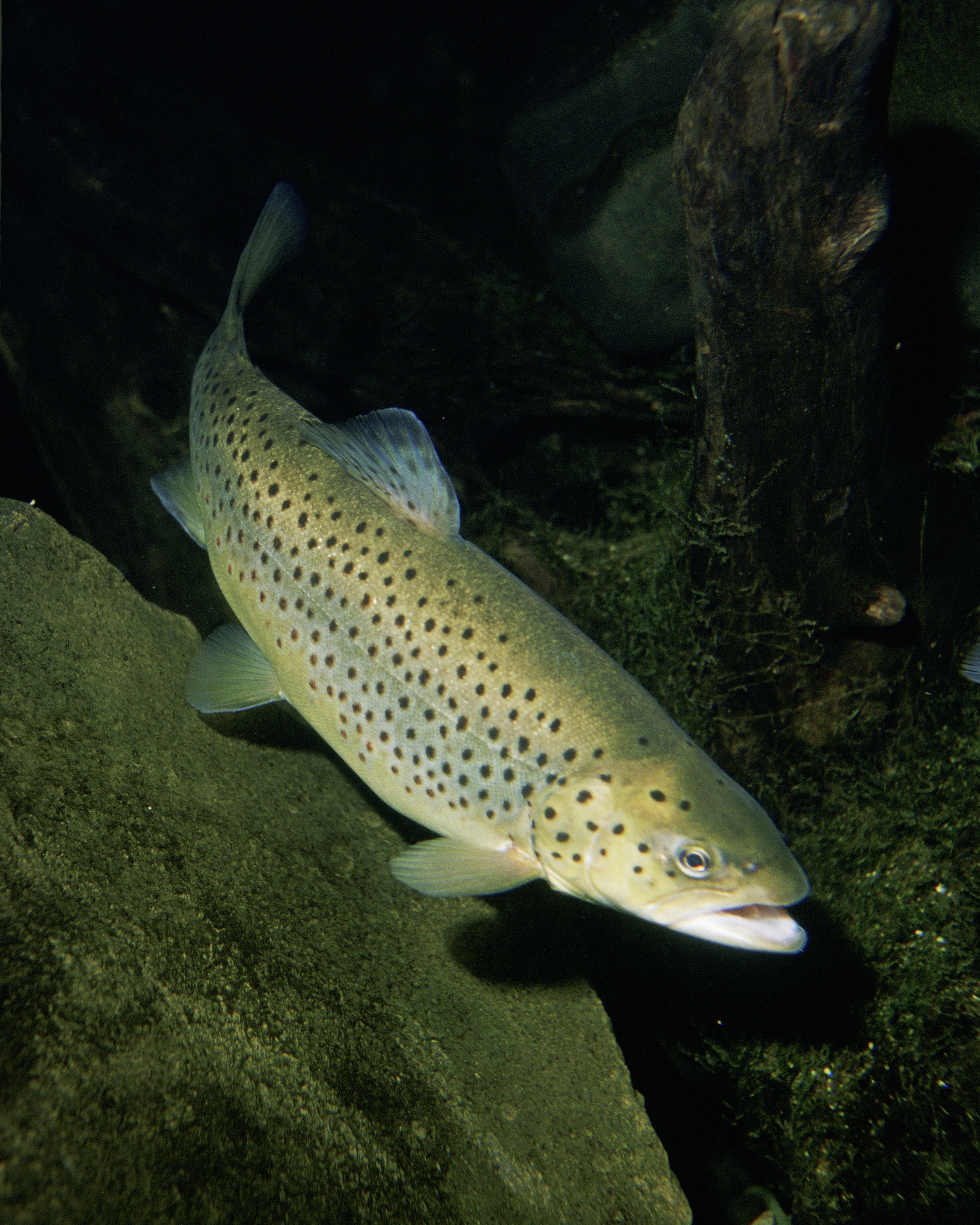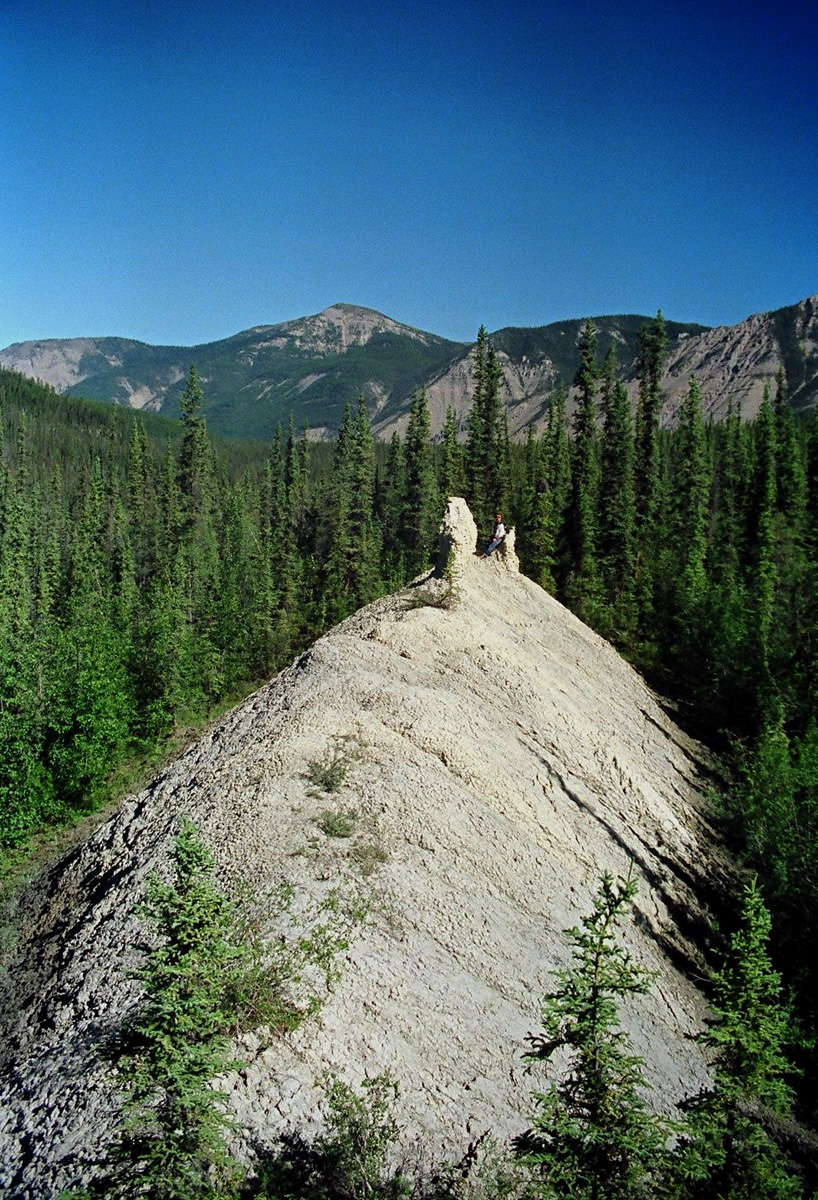|
Fester Hollow
Fester Hollow is a tributary of West Branch Briar Creek in Columbia County, Pennsylvania, in the United States. It is long. Fester Hollow was most likely named in the middle of the 1800s, before 1860, after John Fester, a landowner and farmer. Bedrock in the watershed of Fester Hollow consists of shale, siltstone, and limestone. The stream's watershed has an area of 4.54 square miles. Its median discharge is 3.54 cubic feet per second and its median pH is 7.66. Course Fester Hollow begins in northeastern North Centre Township, on the southern side of Knob Mountain. The stream flows southeast until it reaches Pennsylvania Route 93, which it crosses. It then turns south-southeast and flows parallel to Pennsylvania Route 93 for a short distance, passing by a cemetery. When Pennsylvania Route 93 curves east, Fester Hollow continues going south-southeast. It then passes by the community of Fowlersville and then enters West Branch Briar Creek. Hydrology and climate The discharge o ... [...More Info...] [...Related Items...] OR: [Wikipedia] [Google] [Baidu] |
Nitrate
Nitrate is a polyatomic ion with the chemical formula . Salts containing this ion are called nitrates. Nitrates are common components of fertilizers and explosives. Almost all inorganic nitrates are soluble in water. An example of an insoluble nitrate is bismuth oxynitrate. Structure The ion is the conjugate base of nitric acid, consisting of one central nitrogen atom surrounded by three identically bonded oxygen atoms in a trigonal planar arrangement. The nitrate ion carries a formal charge of −1. This charge results from a combination formal charge in which each of the three oxygens carries a − charge, whereas the nitrogen carries a +1 charge, all these adding up to formal charge of the polyatomic nitrate ion. This arrangement is commonly used as an example of resonance. Like the isoelectronic carbonate ion, the nitrate ion can be represented by resonance structures: Dietary nitrate A rich source of inorganic nitrate in the human diets come from leafy green foods, ... [...More Info...] [...Related Items...] OR: [Wikipedia] [Google] [Baidu] |
Rivers Of Columbia County, Pennsylvania
A river is a natural flowing watercourse, usually freshwater, flowing towards an ocean, sea, lake or another river. In some cases, a river flows into the ground and becomes dry at the end of its course without reaching another body of water. Small rivers can be referred to using names such as creek, brook, rivulet, and rill. There are no official definitions for the generic term river as applied to geographic features, although in some countries or communities a stream is defined by its size. Many names for small rivers are specific to geographic location; examples are "run" in some parts of the United States, "burn" in Scotland and northeast England, and "beck" in northern England. Sometimes a river is defined as being larger than a creek, but not always: the language is vague. Rivers are part of the water cycle. Water generally collects in a river from precipitation through a drainage basin from surface runoff and other sources such as groundwater recharge, springs, a ... [...More Info...] [...Related Items...] OR: [Wikipedia] [Google] [Baidu] |
List Of Rivers Of Pennsylvania
This is a list of streams and rivers in the U.S. state of Pennsylvania. By drainage basin This list is arranged by drainage basin, with respective tributaries indented under each larger stream's name. Delaware Bay Chesapeake Bay *''Elk River (MD)'' **Big Elk Creek ** Little Elk Creek *''North East River (MD) ** North East Creek * Gunpowder River Susquehanna River *Susquehanna River ** Deer Creek ** Octoraro Creek ***West Branch Octoraro Creek **** Stewart Run ***East Branch Octoraro Creek **** Muddy Run ** Conowingo Creek ** Fishing Creek (Lancaster County) ** Muddy Creek (Susquehanna River tributary) *** North Branch Muddy Creek ***South Branch Muddy Creek **Tucquan Creek ** Otter Creek ** Pequea Creek ***Big Beaver Creek *** Little Beaver Creek ** Conestoga River *** Little Conestoga Creek *** Mill Creek ***Lititz Run *** Cocalico Creek **** Hammer Creek **** Middle Creek **** Indian Run **** Little Cocalico Creek *** Muddy Creek (Conestoga River tributary) **** ... [...More Info...] [...Related Items...] OR: [Wikipedia] [Google] [Baidu] |
Cabin Run, Columbia County, Pennsylvania
Cabin Run is a tributary of West Branch Briar Creek in Columbia County, Pennsylvania, in the United States. It is approximately long and flows through North Centre Township. The watershed of the stream has an area of . The waters of the stream are slightly acidic. Its watershed lies over shale and siltstone. Several early attempts at settlement on Cabin Run occurred in 1777 and 1778. Course Cabin Run begins in a valley on Summer Hill in North Centre Township. It flows southeast for a short distance before turning south and flowing parallel to Cabin Run Road for several tenths of a mile. Upon leaving the valley, the stream crosses Fowlersville Road and turns southeast for a short distance before turning south again. After another few tenths of a mile, it reaches its confluence with West Branch Briar Creek. Cabin Run reaches its confluence with West Branch Briar Creek upstream of its mouth. Hydrology The discharge of Cabin Run ranges from 0.17 to 15.7 cubic feet per second. Th ... [...More Info...] [...Related Items...] OR: [Wikipedia] [Google] [Baidu] |
Trout
Trout are species of freshwater fish belonging to the genera '' Oncorhynchus'', '' Salmo'' and '' Salvelinus'', all of the subfamily Salmoninae of the family Salmonidae. The word ''trout'' is also used as part of the name of some non-salmonid fish such as ''Cynoscion nebulosus'', the spotted seatrout or speckled trout. Trout are closely related to salmon and char (or charr): species termed salmon and char occur in the same genera as do fish called trout (''Oncorhynchus'' – Pacific salmon and trout, ''Salmo'' – Atlantic salmon and various trout, ''Salvelinus'' – char and trout). Lake trout and most other trout live in freshwater lakes and rivers exclusively, while there are others, such as the steelhead, a form of the coastal rainbow trout, that can spend two or three years at sea before returning to fresh water to spawn (a habit more typical of salmon). Arctic char and brook trout are part of the char genus. Trout are an important food source for humans and ... [...More Info...] [...Related Items...] OR: [Wikipedia] [Google] [Baidu] |
Briar Creek Township, Pennsylvania
Briar Creek Township is a township in Columbia County, Pennsylvania. It is part of Northeastern Pennsylvania. The population was 2,992 at the 2020 census. Geography Briar Creek Township is in eastern Columbia County, bordered to the east by Luzerne County, to the north by Fishing Creek Township, to the west by North Centre Township, and to the south by the boroughs of Briar Creek and Berwick. The unincorporated community of Foundryville is in the southeastern corner of the township, adjacent to Berwick. The northern boundary of the township follows the ridgecrest of Huntington Mountain, while Lee Mountain is south of it, running nearly parallel to it. The two ridges converge to form Knob Mountain, which is primarily west of the township. According to the United States Census Bureau, the township has a total area of , of which is land and , or 1.04%, is water. Demographics As of the census of 2000, there were 3,061 people, 1,225 households, and 911 families residing i ... [...More Info...] [...Related Items...] OR: [Wikipedia] [Google] [Baidu] |
Ravine
A ravine is a landform that is narrower than a canyon and is often the product of streambank erosion.Definition of "ravine" at Ravines are typically classified as larger in scale than gullies, although smaller than s. Ravines may also be called a cleuch, dell, ghout (), [...More Info...] [...Related Items...] OR: [Wikipedia] [Google] [Baidu] |
Appalachian Mountains
The Appalachian Mountains, often called the Appalachians, (french: Appalaches), are a system of mountains in eastern to northeastern North America. The Appalachians first formed roughly 480 million years ago during the Ordovician Period. They once reached elevations similar to those of the Alps and the Rocky Mountains before experiencing natural erosion. The Appalachian chain is a barrier to east–west travel, as it forms a series of Ridge-and-Valley Appalachians, alternating ridgelines and valleys oriented in opposition to most highways and railroads running east–west. Definitions vary on the precise boundaries of the Appalachians. The United States Geological Survey (USGS) defines the ''Appalachian Highlands'' Physiographic regions of the world, physiographic division as consisting of 13 provinces: the Atlantic Coast Uplands, Eastern Newfoundland Atlantic, Maritime Acadian Highlands, Maritime Plain, Notre Dame and Mégantic Mountains, Western Newfoundland Mountains, Pied ... [...More Info...] [...Related Items...] OR: [Wikipedia] [Google] [Baidu] |
Ridge And Valley
The Ridge-and-Valley Appalachians, also called the Ridge and Valley Province or the Valley and Ridge Appalachians, are a physiographic province of the larger Appalachian division and are also a belt within the Appalachian Mountains extending from southeastern New York in the north through northwestern New Jersey, westward into Pennsylvania through the Lehigh Valley, and southward into Maryland, West Virginia, Virginia, Kentucky, Tennessee, Georgia, and Alabama. They form a broad arc between the Blue Ridge Mountains and the Appalachian Plateau physiographic province (the Allegheny and Cumberland plateaus). They are characterized by long, even ridges, with long, continuous valleys in between. The river valleys were areas of indigenous settlements for thousands of years. In the historic period, the Cherokee people had towns along many of the rivers in western South Carolina and North Carolina, as well as on the western side of the Appalachian Mountains in present-day Tennessee. ... [...More Info...] [...Related Items...] OR: [Wikipedia] [Google] [Baidu] |
Loam
Loam (in geology and soil science) is soil composed mostly of sand ( particle size > ), silt (particle size > ), and a smaller amount of clay (particle size < ). By weight, its mineral composition is about 40–40–20% concentration of sand–silt–clay, respectively. These proportions can vary to a degree, however, and result in different types of loam soils: sandy loam, silty loam, clay loam, sandy clay loam, silty clay loam, and loam. In the , textural classification triangle, the only soil that is not predominantly sand, silt, or clay is called "loam". Loam soils generally contain more nutrients, moisture, and [...More Info...] [...Related Items...] OR: [Wikipedia] [Google] [Baidu] |
Silt
Silt is granular material of a size between sand and clay and composed mostly of broken grains of quartz. Silt may occur as a soil (often mixed with sand or clay) or as sediment mixed in suspension with water. Silt usually has a floury feel when dry, and lacks plasticity when wet. Silt also can be felt by the tongue as granular when placed on the front teeth (even when mixed with clay particles). Silt is a common material, making up 45% of average modern mud. It is found in many river deltas and as wind-deposited accumulations, particularly in central Asia, north China, and North America. It is produced in both very hot climates (through such processes as collisions of quartz grains in dust storms) and very cold climates (through such processes as glacial grinding of quartz grains.) Loess is soil rich in silt which makes up some of the most fertile agricultural land on Earth. However, silt is very vulnerable to erosion, and it has poor mechanical properties, making construc ... [...More Info...] [...Related Items...] OR: [Wikipedia] [Google] [Baidu] |






.jpg)
